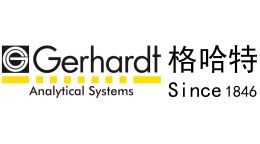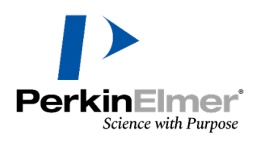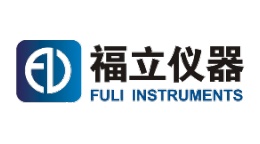受原油污染的风化土中总石油烃(TPHs)含量的检测
检测样品 土壤
检测项目 有机污染物
参考标准 HJ 1021-2019土壤和沉积物石油烃(C10-C40)的测定气相色谱法
方案详情文
智能文字提取功能测试中
在过氧化物氧化剂抑制风化不饱和土壤中石油烃的生物降解Biodegradation of petroleum hydrocarbons in a weathered, unsaturated soil is inhibited by peroxide oxidantsJournal of Hazardous Materials 433 (2022)128770 Journal of Hazardous Materials 433 (2022) 128770O.G. Apul et al.Sodium percarbonateHydrogen peroxide Contents lists available at S c i enc e Direct Journal of Hazardous Materials journal homepage: www.e l sevier .com/locate/jh a zmat 在过氧化物氧化剂抑制风化不饱和土壤中石油烃的生物降解 Biodegradation of petroleum hydrocarbons in a weathered, unsaturated soil is inhibited by peroxide oxidants Onur G. Apul a .b ,1, Sarah Arrowsmith , Caitlyn A. Hall a.b ,c ,2, Evelyn M. Miranda, Fabiha Alam , Paul Dahlen , Kanwartej Sra , Roopa Kamath , Sara J. McMillen ,Natasha Sihota , Paul Westerhoff , Rosa Krajmalnik-Brown b.f , Anca G. Delgado a ,b ,c ,* Biodesign Swette Center for Environmental Biotechnology, Arizona State University, Tempe, AZ, USA School of Sustainable Engineering and the Built Environment, Arizona State University, Tempe, AZ, USA Engineering Research Center for Bio-mediated and Bio-inspired Geotechnics, Arizona State University, Tempe, AZ, USA “ Chevron Technical Center (a Chevron USA Inc. division), Houston, TX, USA e Chevron Technical Center (a Chevron USA Inc. division), San Ramon, CA, USA Biodesign Center for Health Through Microbiomes, Arizona State University, Tempe, AZ, USA HIGHLIGHTS GRAPHICALABSTRACT ·Combined H2O2 oxidation and bio-stimulation were tested in a weathered soil . ·48 g H202 kg - or 24 g percarbonate kg -was applied at 0, 14, and 28 days. ·Substantial TPH removal from crude oil Was not observed in oxidant microcosms. Jnsat u rat e d s o h wi i e ld -w ea th e r e c iydrocarbons ·Oxidant application decreased TOC by 7.6-41.8% and increased DOC up to 40-fold. ·Oxidants altered the viability and composition OI soil microbial communities. Peroxi d e ARTICLEINFO ABSTRACT Editor: Shaily Mahendra Keywords:Chemical oxidation Landfarming Crude oil Hydrocarbon biodegradation Field-weathered crude oil-containing soils have a residual concentration of hydrocarbons with complex chemical st r ucture, low solubil i ty, and high viscosity, often poorly amenable to microbial degradation. Hydrogen peroxide (H2O2)-based oxidation can generate oxygenated compounds tha t are smaller and/or more soluble and thus increase petroleum hydrocarbon biodegradability. I n this study, we assessed the efficacy of H2O2-based oxidation under unsaturated soil conditions to promote biodegradation in a field -contaminated and weathered soil con-taining high concentrations of total petroleum hydrocarbons (25200 mg TPH kg-) and total organic carbon (80900 mg TOC kg -). Microcosms amended with three doses of 48 g H202 kg -soil (unactivated or Fe2+. * Correspondence to: Biodesign Swette Center for Environmental Biotechnology, 1001 S McAl l ister Ave, Tempe, AZ 85287-5701,USA E-mail address: a n ca .d elg a d o @as u.e du (A.G. Delgado). Present address: Civil and Environmenta l Engineering, University of Maine, Orono, ME, USA Present address: Honors College, University of Arizona, Tucson, AZ, USA h t tp s ://doi .or g/10.1016/j .jh azm a t .2022.128770 Received 25 November 2021; Received in revised form 7 March 2022; Accepted 21 March 2022 Available online 26 March 2022 0304-3894/C 2022 The Author(s). Publ i shed by Elsevier B.V. This is an open access article under the CC BY l icense (h t t p://creativecommons.org /l icenses/by/4.0/). activated) or 24 g sodium percarbonate kg - soil and nutrients did not show substantial TPH changes during the experiment. However, 7.6-41.8% of t he TOC concentration was removed. Furthermore, production of DOC was enhanced and highest in the microcosms with oxidants, with approximately 20-40-fold DOC increase by the end of i ncubation. In the absence of oxidants, biostimulation led to > 50% TPH removal in 42 days. Oxidants l i mited TPH biodegradation by diminishing the viable concentration of microorganisms, altering the composition of the soil microbial communities, and/or creating inhibitory conditions in soi l . Study's findings underscore the importance of soil characteristics and petroleum hydrocarbon properties and inform on potential limitations of combined H202 oxidation and biodegradation i n weathered soils. The ability of aerobic microorganisms to convert petroleum hydro-carbons from crude oi l to CO2, water, and biomass can be exploited to bioremediate soils (Fuen t es e t a l ., 2014; Sa r k a r e t al ., 2005). One of the most pract i cal and inexpensive approaches for petroleum hydrocarbon bioremediation is land treatment. Land treatment variations include in situ biotreatment, landspreading, or landfarming. These methods have been used to mitigate hydrocarbon contamination from soils, drill cut-tings, pit sludges, and tank bottoms (M c M il l e n e t a l., 2004; Zi m merman an d Rob ert , 1991; P aud yn et a l., 2008). To promote aerobic biodegra-dation during land treatment, essential nutrients (typically, sources of nitrogen and phosphorous) are supplemented, while the soil is mixed frequently to provide O2. Water i s commonly added to reach 60-80% of the soil 's water holding capacity (Hu e t al., 2013; Mari n e t al., 2005). In a typical biodegradation process, aerobic hydrocarbon-degrading mi-croorganisms first activate hydrocarbons for subsequent oxidation by inserting one or two -OH groups using one or two oxygen atoms (Van H am me , Si ngh, an d W ar d , 2003; Pr in ce and W a l ter s , 2010). The initial activation requires an investment in the form of a source of reductant (NADH), but this oxygenation reaction does not yield electrons to return the i nvestment (R it t m an n an d M cC ar ty, 2020; W o o an d Ri t tmann, 2000;Yu, Ki m , a nd Rittmann, 2001). The microorganisms gain electrons for energy generation only through the subsequent oxidation reactions.Oxygenation products such as alkane alcohols are oxidized to acids, and they are catabolized by l ipid-catabolic pathways (K a r l sso n e t a l ., 2003;M o o d y et al., 2004; V a nbeilen e t al., 1994). Field-weathered petroleum hydrocarbon-containing soils represent a major challenge for aerobic biodegradation. The extent of weathering depends on the type of crude oil, the age of the spil l, and in situ biogeochemical conditions (P r i n c e a nd Wal ters , 2010). Nonetheless,weathered soils contain a residual concentration of hydrocarbons with complex chemical structures, low solubil i ty, and high viscosity. The residua l concentration in weathered soi l s is often poor l y amenable to biodegradation (N o centi n i, Pi n e l l i, a nd F a v a, 2000). Gas-, liquid-, or solid-phase chemical oxidants could potent i ally overcome some of the l i mitations imposed by the chemical properties of petroleum hydrocar-bons. Hydrogen peroxide (H202, liquid oxidant ) or ozone (O3, gas oxidant), transfer electrons from hydrocarbons and/or catalytical l y produce reactive f ree radicals (·OH) (M o nf o rt et a l., 2020; Si e gri s t e t a l.,2011; Wat ts , 1992; Zh a n g e t a l ., 2020). The reaction between these oxidants and petroleum hydrocarbons can generate oxygenated com-pounds that are smaller and/or more soluble and potentially more biodegradable than the parent compounds (Chen et a l ., 2017,2016;Zha ng , Guo et a l ., 2020). Chemical oxidants can also directly mineralize petroleum hydrocarbons (Apu l e t a l ., 2016; C he n e t a l ., 2016, 2017;T sa i an d K a o, 2009) or mobil i ze essent i al nutrients for biodegradation (Chen e t a l ., 2016; Su t t o n , G ro t e nhu is, a nd R i jnaa r t s, 2014). Thus, application of H202 or Fenton’s Reagent and solid-phase oxidants (persulfate, per-carbonate, permanganate salts) could be easily incorporated into land treatment operations for hydrocarbon-contaminated soils via spreading of solids or spraying of liquids. In the laboratory, chemical oxidation and biodegradation (either pre- or post-oxidation) was shown to improve the overall removal of petroleum hydrocarbons in aa number of studies (G o ng ,2012: Si lva-Ca s t r o e t a l., 2013; K oo li van d e t a l ., 2014; X u e t al ., 2011; V al-de r ra ma et a l ., 2009; Zhen et al ., 2021; C h en e t a l ., 2019). Doses on the order of g to kg oxidant per kg soil have been tested with documented successes. For example, in an artificially contaminated soil with crude oil, TPH removal rates were i ncreased by 24% when 3.4 g H202kg-soil and Fe +2 (at a 10:1 molar ratio) were used in combination with bio-stimulation (Z he n et al ., 2021). When the oxidant dosage was increased to 17 g H202kg-l soil (0.34 g H202g-TPH), the kinetic advantage for TPH removal was still observed but to a lower extent (~4% higher than in biostimulation control). The diminished effect of the higher H202dose on biodegradation was attributed to increases in soi l temperature (Zh en et al., 2021), which can negatively affect microbia l viabil i ty and survivability. In a weathered crude-oil contaminated soil, 850 g H202kg -s oil (36 g H202 g -TPH) and biostimulation was reported to achieve 89% TPH removal after 20 weeks of incubation compared to 55% TPH removal by biostimulation only (Gon g, 2012). In studies using 03 (20-80 g 03 kg -1 soil or 1.1-4.5 g 03gTPH), gas oxidation of weathered crude oil-contaminated soi ls increased the dissolved organic carbon (DOC) concentration and soils’5-day biochemical oxygen de-mand (BODs) via production of carboxylic acids, ketones, and aldehydes (Ch e n et a l., 2017,2016). Similar observations regarding increases in BODs were also reported in a soil pre-t reated by Fenton’s Reagent (1000-20000g H202kg-l soil) (Mat e r e t a l., 2007). Nonetheless, when 03 gas was applied pre-biodegradation, the rate of TPH removal by microorganisms was not enhanced (C he n e t a l ., 2019). While literature suggest a strong potent i al for chemical oxidation in promoting downstream biodegradation, in certain instances, saturated soils or soil slurries were employed (Xu e t a l ., 2016, 2011; Va lde r r a ma et a l ., 2009; M at er e t al., 2007). Thus , it is unclear if similar outcomes can be achieved under unsaturated soil conditions for applications in land treatment. Furthermore, soils blended/spiked with diesel (typical l y C12-C20 TPH) (S ilv a -C astr o e t al., 2013; A k p ov e t a , Medjor , a nd M edjo r ,2018) or petroleum from a chemical plant containing C10-C20 TPH (Z h en e t a l ., 2021) have been tested in laboratory conditions for chemical oxidation-enhanced biodegradation. In some studies, actua l soi ls from oil wells (Xu et al., 2016), sites adjacent to flare pits (Gon g , 2012),temporary storage in oil ref i nery sites (Ko o l iv and e t a l ., 2014), or surface soil impacted by tank oil at storage sites (Xu e t al ., 2011) were collected and uti l ized for oxidation. Nonetheless, the efficacy of chemical oxida-tion to enhance biodegradation in field-contaminated, weathered soils containing heavy hydrocarbons (up to C40 TPH) has been sparingly examined. In this study, we employed H202-based oxidation (H202,Modi f ied Fenton, and sodium percarbonate) and biost i mulation for C9-C40 TPH removal from a crude oil-containing, field-weathered soil.Using soi l microcosms, we tested combined chemical oxidation and biodegradation considering per t inent aspects relevant to landfarming applications (i .e., dose of oxidant, unsaturated soil conditions, addition of nutrients and water, and frequent soil mixing) and examined its effect on organic carbon, microbial abundance, and microbial community structure. 2.1..(Crude oil-contaminated weathered soil Soi l samples that underwent weathering in the field for several de-cades were collected from two crude oi l -impacted confidentia l locations within an oil f ield located in Midwestern United States. The original API gravity of the spilled crude oi l was 39°. The soil samples were received at Arizona State University and were composited using a cement mixer and a triple-iteration, cross-mixing method . The f i nal composite soil was a silty/clayey fine sand containing mostly fine grains (78.7%) smaller than 250 um (No. 60 mesh) (F i g .S 1). The composition of the sand was quartz (72%), plagioclase (12.5%), and K-spar (9%) according to X-ray fluorescence analysis. The clay mineralogy of the composite soil is provided in the Su p p l e menta ry Mater i al (T ab le S 1). The soil was air-dried in a laboratory fume hood for five days and sieved through No.10 mesh (2 mm) before us i ng in microcosm experiments. The initial concentration of total TPH (as C9-C40 TPH) was 25200±1500 mgkg soil and TOC was 80900±1200 mg kg- soil. The carbon range dis-tribution of the TPH concentration is shown in Fi g. S2. Soil pH was 8.0±0.1, salinity was 37 ±2 ppm, and conductivity was 75 ±5 uS cm. 2.2. Combined chemical oxidation and biodegradation microcosm experiments The abi li ty of peroxide-based oxidants (as liquid and solid) to enhance biodegradation of petroleum hydrocarbons in a field-weathered soi l was experimentally investigated in laboratory micro-cosms. Microcosms consisted of glass pans with a volume of 1.5 L (see Fi g . S3). Each pan contained 0.7 kg dried, homogenized soil with a soil depth of 6-7 cm. The experimental conditions are shown in Tabl e l and were setup in triplicate. Al l conditions (except Static Control) were biost i mulated at t ime 0 d and manually mixed with a hand trowel twice weekly for the duration of the experiment. Biostimulation consisted of amending each microcosm with the following nutrient solutions as previously done (Chen e t al., 2019): 7 mL salt, 0.7 mL trace element A,0.7 mL trace element B, and 0.7 mL vitamin. The salt solution contained per l iter 40 g NH4Cl , 30 g KCl, 20 g KH2PO4,20 g Na 2SO4,10 g NaCl,5g MgCl2·6 H2O, and 0.5 g CaCl22 H2O. Trace element A solution con-tained per liter 1500 mg FeCl24 H20, 190 mg CoCl26 H20, 100 mg MnCl24 H20, 70 mg ZnCl2, 36 mg Na2MoO3·2 H20, 24 mg NiCl26H20,6 mg H3BO3,2 mg CuCl22 H2O, and 10 mL of 25% HCl solution.Trace element B solution contained per l iter 8 mg Na2WO4·2 H20,6mg Na2SeO3·5 H20, and 500 mg NaOH. The composition of the vitamin solution was as used in Ro bles e t a l . (2021). Biostimulation A received only nutrient solutions (Ta bl e 1). Biostimulation B1 and B2 received Table 1 Experimenta l conditions tested in microcosms containing 0.7 kg soil. Oxidants were added at 0 d, 14 d, and 28 d. Microcosm label Oxidant dose (g Oxidant type and Nutrients and kg-soil) condition mixing Static Control No Biostimulation A Yes Biostimulation 0 Yes B1 Biostimulation B2 0 Yes Peroxide 48(×3) 30%wv-1H202 Yes Fenton 48(×3) 30% w v-1H202;9g FeSO4·7 H2O kg-;pH5 Yes Percarbonate 24(×3) 2Na2CO3·3 H202powder Yes a 112 mL of 110 mg L - Tween 80 solution (2X critical micelle concentration)added at time O d. b 112 mL of 30 mg L -Tergitol NP-10 solution (2X critical micelle concen-tration) added at time 0 d. ground and sieved by No. 200 mesh (< 74 um). nutrients and a non-ionic surfactant solution of either Tween 80(denoted B1) or Tergitol NP-10 (denoted B2) at two times the cri t ical micelle concentration only at t ime 0 d (Ta bl e 1). Tween 80 can be used as a substrate for microbial growth h while Tergitol 1NP-10is non-biodegradable (Gonz a lez et a l ., 2011). The surfactants were selected for this study because they were shown to augment the rates of petroleum hydrocarbon biodegradation or the biomass yield of hydrocarbon-degraders (Fe r n and o B a uti s t a et a l., 2009; K i m , P a rk, a n d Ki m, 2001; E f f e ndi e t a l ., 2017). The moisture content of the soil at time 0 d was 15 ± 2% (within 60-80% of soi l ’s water holding capacity) and was maintained at ~15% in all microcosms by adding deionized water twice weekly. Peroxide, Modified Fenton (referred as Fenton in Tab l e 1 and henceforth), and Percarbonate microcosms received oxidants on days 0,14, and 28. The oxidant doses tested were within a range from the l i terature where biodegradation occurred post-chemical oxidation (Zhen et al., 2021; G o n g , 2012; Chen et a l ., 2019) and were applied at the highest practical dose considering constraints relevant to field ap-plications: maintaining the soil below its water holding capacity and/or completely dissolving the oxidant in the soil water (for sodium percar-bonate). Each H2O2 addition was 112 mL of a 30% wv-solution (Sigma Aldrich, St. Louis, MO), corresponding to 48 g H202 kgsoil or ~2 g H202gTPH. This dose of H202 was the highest possible to not exceed the soi l's water holding capacity. In this way, biphasic separation of soil and liquid did not occur and soil washing effect s were avoided. Modified Fenton’s activation was achieved by adding FeSO47 H2O to the soil at a 10:1 H202 to Fe+molar ratio and adjusting the soil pH to 5 using 5 N HCl . The H202 to Fe+ molar rat i o was based upon observations f rom V al derr a ma et a l . (2009), where lower ratios (20:1 or less) were reported beneficial for coupl i ng chemical oxidation with biodegradation. Each sodium percarbonate (Na2CO3·3 H202, Sigma Aldrich, St. Louis, MO)addition was 16.8 g, corresponding to 24 g Na2CO33H202 kg-soil or ~1 g Na2CO33 H202gTPH. The applied Na2CO33 H2O2 dose was the highest possible to not exceed Na2CO3 solubility in the soi l water (at init i al moisture content of 15%). The solubility of Na2CO3·3 H202 in water is 140 g L - (at 20 C). The microcosms were covered with aluminum foil and incubated at 30°C in the dark for 42 days. NH4Cl (400 mg kg-) and KH2PO4 (200 mg kg-) were readded to Bio-st i mulation A, B1, and B2 microcosms on days 14 and 28. 2.3. Chemical and microbiological analytical methods Soil samples (5-10 g) were collected at time 0 d and throughout incubation. TPH was analyzed using the methodology previously pub-l i shed (Apul, Dahlen et al., 2016;Apul , De l ga d o e t a l ., 2016; C h en e t a l.,2017,2016,2019). Briefly, TPH extractions were performed from l g soil dried with sodium sulfate. To verify extraction recovery, 1-chlor-o-octadecane and o-terphenyl (50 uL each from 1000 mg L- solu-tions) were spiked to each soil sample. The extraction was carried out in a Soxtherm instrument (C. Gerhardt Analytica l Systems, Konigswinter,Germany) using 125 mL of dichloromethane. After extraction in the Soxtherm instrument, the TPH extract was fi l tered through a 0.2 um polytetrafluoroethy l ene fi l ter and further concentrated to a f inal volume of 2 mL in a gas chromatography (GC) glass vial. TPH was analyzed in a Shimadzu GC2010 instrument (Columbia, MD) equipped with a f lame ionization detector (FID) and a Restek Rxi-1HT column (30 m x 0.25mm I .D., 0.25 um df) according to EPA Method 8015D and the Massa-chusetts Department of Environmental Protection Method for the determination of extractable petroleum hydrocarbons. The moisture content of the soil was determined by drying at 105°C for 24 h and concentrations were reported as mg TPH kg-s oil (dry weight). The extraction recovery in study samples was 87 ±14% for 1-chloro-octade-cane and 108 ±20% for o-terphenyl. Total organic carbon (TOC) was determined using a Shimadzu TOC Solid Sample Module SSM-5000A. Dissolved organic carbon (DOC) was measured using a Shimadzu TOC-VcsH. The methodologies for TOC and DOC in crudeoil-contaminated soils were detailed previously (Chen e t al., 2017, 2019). The pH, salinity , and conductivity were determined in a 1:5 (w w-) soil to water r atio using a Multiparameter 35-Series Testrs probe (Oakton Instruments, Vernon Hills, IL). BODs experi-ments were set up using microcosm soi l before and after oxidant addi-tion (day 0) and at the end of i ncubation (day 42) to assess changes in concentration of readily biodegradable organic compounds. BOD re-actors consisted of glass bottles (Kimble KIMAX-35 300 mL BOD Bottles,Fisher Scienti f ic, Waltham, MA) containing 200-250 mg of soil and medium up to 300 mL. The medium composition per l iter was as follows:8.5 mg KH2PO4, 22 mg K2HPO4, 33 mg Na2HPO4·7 H20, 1.7 mg NH4Cl,23 mg MgSO4·7 H20, 28 mg CaCl2, and 0.25 mg FeCl36 H2O. A pre-determined seed consisting of 1 or 5 mL of an enrichment culture grown on crude oil (Che n et a l., 2016) was used in inoculated BOD5reactors. Dissolved O2 concentrations were measured with a Pro-O-BOD probe (YSI, Yellow Spr i ngs, OH). The initial dissolved O2 concentration was 8.4-8.5 mg L-. The BOD bottles were incubated for 5 days at the same temperature as the soil microcosms (30℃). All soil samples,inoculum-only controls, and medium-only controls were tested in triplicates. Culturable microorganisms in microcosms were enumerated as col-ony f orming units (CFUkg-soil) throughout incubation. 0.5 g soi l from each microcosm were suspended in 10 mL phosphate buffered saline solution (0.13 M NaCl, 10 mM sodium phosphate, pH 7.2) and vortexed vigorously for 1 min. The slurries were serially diluted in phosphate buffered saline and plated on t ryptic soy agar plates. Triplicate plates were setup for each dilution. The plates were incubated in the dark at 30℃ and colonies were counted after 24 h. Genomic DNA was extracted from 0.25 g soil collected f rom replicate microcosms at time 0 d, 14 d, and 42 d using the PowerSoil DNA Isolation Kit (MO BIO Laboratories, Inc.,USA). Triplicate DNA samples were extracted per time point for each condition. High throughput amplicon sequencing of the V4 region of the 16S rRNA gene of Bacteria and Archaea was performed using a MiSeq instrument (Il lumina, Inc.,San Diego, CA) at t he Microbiome Facility, Biodesign Insti t ute, Ar i zona State University (htt ps://c o res .res ea r c h.a s u .e du/ge n o m i c s/c a p ab i l i t i es ). The primer set was 515F/806R. Amplicon sequence variants (ASVs)were obtained the bioinformat i cs protocol detailed in previous publi-cations using the Quantitative Insights into Microbial Ecology (QIIME 2.0 v. 2020.8) pipeline (Jo s h i e t a l., 2021; R a n ga n et a l ., 2020; Mi r an d a e t al., 2022). Alpha (Faith’s phylogenic diversity (PD)) and beta (Jaccard distance) diversity analyses were performed in QIIME 2. The raw sequence data were uploaded to National Center for Biotechnology (NCBI) and are available under project number PRJNA717894, acces-sion number SAMN18515268-5327. Statistical significance of study WAS results was evaluated using a Student’s t-test with a 95% confidence interva l (p <0.05 was considered statistically significant ). 3. Results and discussion 3.1. Effect ofH202 oxidation and biostimulation on organic carbon in soil H2O2 addition to the soil at time 0 d initiated a visible reaction after ~30 s with steam-like emission and expansion of soil volume (F i g. S 3).The soi l temperature increased to 45℃ in Peroxide microcosms and to 75℃ in Fenton microcosms. A change in soi l color from dark brown to light brown was also noted in all soi l microcosms with added H202(Fi g. S 3). In Percarbonate microcosms, no v i sible reaction was recorded ,and the soi l temperature did not change. This outcome was attributed to the slow dissolution and l imited diffusion of sodium percarbonate in soil (in contrast to the direct addi t ion of H202 solution in Peroxide and Fenton microcosms). Additional Fe was not provided i n the Percar-bonate microcosms, which possibly slowed ·OH formation rates and thus suppressed a visible/harsh reaction. It has been suggested that the rapid temperature i ncrease during H2O2 addition was due to high Fe+ salt dosages, causing fast consumption of ·OH (Lema i r e et a l ., 2013). Fig. 1. Concentrations of total petroleum hydrocarbons (TPH), total organic carbon (TOC), and dissolved organic carbon (DOC) in soi l microcosms during incubation. Chemical oxidants in Peroxide, Fenton, Percarbonate microcosms were applied on days 0, 14, and 28. The data are averages with standard de-viation of triplicate microcosms. If error bars are not visible, they are smaller than the symbols . Incidental temperature increases and visible reactions were not observed or discussed in other pertinent soil studies employing sodium percarbonate for oxidation of model polycyclic aromatic hydrocarbons (e.g., phenanthrene, anthracene, fluoranthene) (D e La Cal l e, Gime n o ,an d R iv as , 2012), chlorinated aromatic hydrocarbons (Vi i s ima a a nd G oi,2014), or crude oil (C avalcan t i et a l ., 2021; Da n gi et al., 2022; Effen d i et a l ., 2017). The concentrations of TPH, TOC, and DOC in microcosms during incubation are shown in F ig. 1. When compared to Biost i mulation (A,B1, and B2), TPH concentrations in Peroxide, Fenton, and Percarbonate microcosms did not show substantia l changes during the experiment (F i g . 1). However , 21.3% and 41.8% of TOC was removed after three oxidant doses and 42 days of incubation in Peroxide and Fenton mi -crocosms, respectively (T abl e S2). The corresponding TPH removed (as TOC) was a small fraction in these microcosms (3.6-7.4% TPH removed as TOC, T ab l e s S2). In Percarbonate microcosms, the TOC loss after the oxidant additions and incubation was 7.6% but the fraction of TPH removed (as TOC) was highest (27.6%) compared to the other condi-tions with oxidants (T a ble S 2). approximately 20-40-fold DOC increase by the end of the experiment (Ta bl e S 2). S u tton e t a l . (2014) reported that biodegradation of petro-leum hydrocarbons was halted after addition of 125 g H202 kg-soil (and~2g Fe kg-) in a diesel-contaminated soil containing 5000 mg TPH kg-1. Yet, a 10-20-fold increase in DOC concentration was noted by Su tt on et al . (2014) and Xu et a l. (2016) i n oxidant-amended, petroleum hydrocarbon-containing soil slurries. These data imply a prominent re-action between H2O2 and natural soil organic matter but to a much lesser extent between H202 and weathered petroleum hydrocarbons from crude oil. In the absence of chemical oxidants, Biostimulation A, B1, and B2microcosms from our study removed more than half of the initial TPH concentration (F ig . 1). In Biostimulation A, the decrease in TOC con-centration by day 42 was 18.7% (Tab l e S 2). TPH removal accounted for 81.2% of total TOC loss as determined by C balance calculations (Ta bl e S2). A considerable decrease i n pH upon incubation (i.e., 1log unit in 42 days) was also observed in Biostimulation microcosms (Tabl e 2). The pH decrease is likely at t ributed to the formation of mi-crobial metabolic products from petroleum hydrocarbons, such as car-boxylic acids (O k e r e nt ug ba a nd E ze nron ye , 2003; A tl as , 1981; Va rj a n i,2017). The addition of a surfactant solution in Biostimulation B1 and B2microcosms significantly increased the rate of TPH removal compared to Biostimulation A, but only in the f irst 14 days (Fi g . 1, p <0.05). This init i al boost in biodegradation rates could be attributed to solubilization of hydrocarbons into the aqueous phase and increased hydrocarbon bioavai l ability. An i mprovement in TPH remova l via biodegradation up to 10% from "lightly impacted” (i.e., 3000 mg TPH kg-soil ) and 40%from "heavily impacted"(9000 mg TPH kg- soil) soils was recorded when 0.05 wt% rhamnolipid was added in batch reactors (L ai et a l.,2009). Higher hydrocarbon biodegradation rates in the early stages of biodegradation have been simi l arly observed i n past investigations (C h ur c h il l , Dudl ey , a n d Chur c hi ll, 1995; As q ui t h e t a l., 2012). 3.2. Decreased survivability of microorganisms after H202 addition to microcosms The low TPH biodegradation activity in microcosms with added oxidants implied that the hydrocarbon-degrading microbial populations in soil were either killed and/or their growth was inhibited. F ig. 2 shows that application of H202 in Fenton microcosms decreased the abundance of soil microorganisms (as CFU g- soil) by more t han two orders of magnitude throughout incubation (Fi g . 2B). In soil samples from day 42(end of experiment), no CFUs were detected on plates using by 0.1 g soil from Fenton microcosms (F ig. 2B). Oxidant reactivity, increases in soil temperature after H2O2 addition, and the acidic pH in the Fenton mi-crocosms during incubation (T a ble 2) are expected to have contributed to the substantia l reduction in viable microbial populations. BOD5 ex-periments using soil from Fenton microcosms at time 0 d (before and after H202 addi t ion) also confirmed microbial survivability was signif-icantly decreased (p <0.05, F i g. S5). However, O2 consumption in the BOD reactors could be restored when a seed inoculum culture was added (F ig . S5). Similar to the findings from this study, Xu et al . (2016) showed that 324g H202 kg -soil (as single or four step-wise doses) decreased the abundance of indigenous soil microorganisms by ~ 2-5 orders of magni t ude. Subsequent biodegradation post-oxidation was enhanced by the addit i on of an inoculum culture (Xu e t al ., 2016). Peroxide micro-cosms from our study showed a rebound i n the abundance of microor-ganisms by the end of incubation (F i g. 2B, day 42). These results are consistent with the lower reactivity of H202 in Peroxide microcosms and with a near neutral pH during incubation (T ab l e 2). V al d e r ram a e t a l.(2009) documentedthat increasing the H202concentration pre-biodegradation decreased the extent of polycyclic aromatic hydro-carbons biodegradation activity in a creosote-containing soil. The au-thors suggested that lower H202 doses (H202:Fe molar ratio of 20:1 or less) are more appropriate for a combined chemical and microbiological treatment of soi l containing 4 g kgtotal Fe, as residual H202 in soil was suspected to inhibit microbial growth (Va ld e rr a m a e t a l ., 2009).C he n et al . (2016) provided evidence on persistence of indigenous bacteria following ozonation and noted no difference in BODs after addition of a seed culture. Eff e ndi e t a l. (2017) used 5-25 g carbamide peroxide or calcium peroxide kg- soil i n a f ield-contaminated soi l with an initial concentration of 29000 mg TPH kg- soil. The study docu-mented decreases in TPH concentration after incubation for 95 days in the oxidant amended microcosms; however, similar to this work, TPH biodegradation extent was greatest in the biost i mulation control without oxidants (Effendi e t a l., 2017). Findings from the literature indicate that the type of oxidant and dosage can influence the activity of indigenous microbial community in soil, which in turn impact the effectiveness of biodegradation following oxidan t addition. In this study,survivabi li ty of microorganisms strongly explains the absence of petro-leum hydrocarbon biodegradation in Peroxide and Fenton microcosms. 3.3. Addition of sodium percarbonate resulted in inhibitory conditions for TPH biodegradation In Percarbonate microcosms, the CFU concentration was similar throughout incubation and not significantly different than in Static Control at the end of the experiment (Fig. 2, 42 d). BODs tests estab-l i shed that O2 consumption after one or three doses of sodium percar-bonate in Fenton microcosms cannot be restored by adding a seed inoculum culture (Fig. S 5, 0 d and 42 d). Combined, these results sug-gested that petroleum hydrocarbon and TOC biodegradation was inhibited by a different mechanism in the Percarbonate microcosms compared to Peroxide or Fenton (F ig. 1, Percarbonate). Ta b le 2 shows that soil conductivity and salinity in Fenton microcosms were an order of magnitude higher on day 42 compared to Static Control and Bio-stimulation microcosms. Furthermore, addition of sodium percarbonate increased the soil pH to > 10 (T a ble 2). Hypersalinity can hamper mi-crobial metabolism due to excessive osmotic stress (Bra ddo c k et a l .,1997; V ar jan i , 2017). Most heterotrophic soil bacteria favor a neutral pH and a deviation from a neutral pH has been negatively correlated with biodegradation rates (L e a h y a nd C ol we l l , 1990). Thus, soi l quality pa-rameters rather than microbial survivabi l ity were l ikely l i mit i ng biodegradation i n the sodium percarbonate-amended microcosms from this study. Soil pH, conductiv i ty, and salinity during the course of the 42-d incubation. The data are averages with standard deviation of triplicate microcosms. Microcosm pH Conductivity (uS cm-) Salinity (parts per million) Time (days) 0 14 28 42 0 42 0 42 Static Control 8.0±0.1 7.7±0.1 7.7±0.1 7.6±0.1 75±5 75±10 37±2 36±5 Biostimulation A 7.5±0.0 7.3±0.1 6.8±0.0 6.5±0.1 320±8 170±10 130±3 74±2 Peroxide 5.6±0.3 7.7±0.1 7.1±0.2 6.3±0.3 340±30 480±9 140±10 200±3 Fenton 4.8±0.3 5.6±0.3 4.2±0.1 4.3±0.0 280±30 340±60 140±20 150±25 Percarbonate 10.0±0.1 10.7±0.0 11.0±0.1 10.5±0.1 1230±30 1870±300 520±20 840±140 Fig. 2. Abundance of culturable micro -organisms in soil microcosms (A)without oxidants (Static Control and Biostimulation) and (B) with chemical oxidants (Peroxide, Fenton, and Per-carbonate). Oxidants were applied on days 0, 14, and 28. Soil samples for plating were col l ected ~ 30 min after the addi ti on of oxidants. No growth occurred on plates using soi l from Fen-ton microcosms on day 42; thus, no data points are shown for Fenton a t 42 d.The data are averages with standard devia-tion of triplicates. If error bars are not visible, the y y are smaller than the symbols. 3.4. H202 and sodium percarbonate significantly altered the composition of soil microbial communit i es The effect s of combined H2O2-based oxidation and biodegradation or biodegradation only on the microbial communities in the weathered soil used in this study are shown in Fig. 3. Biostimulation via nutrient addi t ion and soil mixing in the absence or presence of H2O2-based oxi-dants significantly decreased Faith’s PD as incubation progressed (F ig. 3A). Decreases in PD were expected based on the selective enrichment conditions (T ab le 1) and concurred with similar PD obser-vations in studies where biodegradation or biotransformation of hy-drocarbons was achieved (Bona g l i a et a l ., 2020;M a e t a l ., 2020; D e lg ad o et al., 2014; C ram pon e t a l ., 2017). Yet , addition of H2O2-based oxidants was clearly more impactful, leading to overall lower Faith’s PD values in the oxidant samples at 14 d and 42 d (F i g. 3A). Gammaproteobacteria (35-41%) was the most abundant ASV in the weathered soil at time 0 d ,followed by Bacteroidia (24-25%), Alphaproteobacteria (10-13%), and Clostridia (6-8%) (F ig . 3C). All biostimulated microcosms without oxi-dants had ingrowth of Gammaproteobacteria and Bacteroidia and the relative abundance of these ASVs positively correlated with TPH biodegradation. Gammaproteobacteria was consistently higher at 14d (53-58%) while Bacteroidia was highest at 42 d (40-42%) (F ig . 3C,Biostimulation A, B1, and B2). KCM-B-112, Acinetobacter, and Chitino-phagaceae (containing known Or putative petroleum hydrocarbon-degrading species (Zha ng e t a l ., 2021; V a r j a n i , 2017; Xu e t a l., 2018)) were among the most abundant resolved taxa (F ig . S 6).Gammaproteobacteria and Bacteroidia are often prominently enriched during biodegradation of petroleum hydrocarbons in soils, sediments, or sludges (Lu e t a l ., 2014; Lia n g et al., 2011; Zh e n et al., 2021; Sil es and M ar ges i n , 2018; Re d d y e t al., 2011; M uk h erj ee e t a l ., 2017). The dy-namic response i n the relative abundance of Gammaproteobacteria and Bacteroidia in the microcosms was likely driven by the change in the degree of biodegradability of the crude oil components during incuba-tion. In crude oi l biodegradation, the paraf f inic fraction is preferentially decreased, resulting in an enrichment i n the heavy polar and asphaltene fractions (Hea d , J o ne s, an d L ar ter , 2003). Addition of oxidants at 0 d in the Peroxide, Fenton, and Percarbonate microcosms changed the initia l microbial community as seen in F ig . 3C.However, the more pronounced effects of H2O2-based oxidation were observed during incubation (F i g . 3C, 14 d and 42 d). Peroxide, Fenton,and Percarbonate microcosm samples dist i nctly clustered from Bio-stimulation samples (A, B1, and B2) as revealed by the Jaccard distance (Fi g . 3B). In Peroxide microcosms, the microbial community profile shi f ted to mainly Alphaproteobacteria ASVs (> 80% of sequences, 42 d,Fi g . 3C) while Fenton microcosms became enriched in genera belonging to Clostridia and Bacilli (F i g. 3C and Fi g . S6). Sodium percarbonate has been used as a source of O2 (from decomposition of H202) in soil to promote aerobic biodegradation directly (V e s p e r e t al., 1994; Wh i t e, I rvin e , an d W oo l a r d, 1998). A limited number of studies have tested combined sodium percarbonate oxidation and biodegradation for petroleum hydrocarbon field-contaminated soils, wastewater-contaminated sediments, or sedi-ments spiked in the laboratory with model compounds (Ef f e n di et al.,2017; P an et al ., 2018; Hu n g, Huan g, Ch en, H s ieh e t a l., 2021; Hu ng ,Hu a n g , Che n, an d Don g , 2021). Nevertheless, the microbial ecology in response to sodium percarbonate remains poorly characterized. In bio-char and soil slur r ies (1 g soi l in 25 mL solution) for degradation of di-(2-ethylhexyl ) phthalate, sodium percarbonate enriched the relative abundance of Actinobacteria and Chloroflexi (H un g, H u an g, Chen, a n d Do ng , 2021). In sediment microcosms (25 g sediment at 60% water content and 5 mL water) contaminated by industrial and domestic wastewater , addition of sodium percarbonate at high concentrations augmented the relative abundance of Clostridia (P an et a l ., 2018). To our knowledge, our study is the first to report the microbial community composition under unsaturated conditions for combined sodium per-carbonate oxidation and biostimulation in a crude oil ,field-contaminated and weathered soil. In Percarbonate microcosms,microbial community composition was the most distinct relative to Static Control and Biostimulation (A, B1, and B2). Bacilli accounted for > 90% of the total sequences (F ig. 3C, 14 d and 42 d). The increase in relative abundance of Gram-positive, spore-forming phylotypes seems to indicate a higher resistance to oxidative stress. Geomicrobium and Sali-paludibacillus predominated in Percarbonate microcosms (Fig . S6).Geomicrobium (non-spore-forming) and Salipaludibacillus (spore-form-ing) contain moderately halophilic and alkaliphilic species (Echi g o e t al., 2010; Su l ta n p ur a m an d M oth e, 2016). The high relative abun-dance of these ASVs agrees with the increased salinity and alkaline soil pH from sodium percarbonate addition (T a bl e 2). 4. Conclusions Results from this study contribute to a l i mited body of knowledge on the use of H2O2-based oxidants in weathered, field-contaminated soils to enhance petroleum hydrocarbon biodegradation. Application of l iquid or solid H2O2-based under unsaturated conditions (as relevant to land-farming) was hypothesized to have potential advantages for biodegra-dation, such as transforming complex petroleum hydrocarbons into s i mpler, more oxidized, and more biodegradable compounds or releasing nutrients. In this work, logistically plausible dosing of aqueous Fe+-activated or unactivated H202 and solid sodium percarbonate salt removed up to 41.8% of TOC, increased DOC by up to 40-fold, but the C9-C40 TPH removed as TOC was only 3.6-27.6%. Overall, oxidant reactivity with (non-TPH) soi l organic matter was favored in the study soil. Furthermore, H2O2 oxidation diminished the viable concentration of hydrocarbon-degrading microorganisms, while sodium percarbonate created high pH and hypersal i ne condi t ions which minimized petroleum hydrocarbon biodegradation in soil. The combined oxidation and bio-stimulation conditions showed a major effect on microbial community structure and relative abundance of known hydrocarbon-degraders.Study findings underscore soil characteristics, petroleum hydrocarbon Time (days) 口Other 口 Clostridia 口Holophagae properties, and oxidant dosing and can inform future efforts focused on combined H202 oxidation and biodegradation of weathered petroleum hydrocarbon-contaminated soils. CRediT authorship contribution statement Onur G. Apul: Conceptualization, Methodology, Investigation,Visualization, Writ i ng - original draft. Sarah Arrowsmith: Investiga-tion. Caitlyn A. Hall: Investigation. Evelyn M. Miranda: Investigation.Fabiha Alam: Investigation. Paul Dahlen: Investigation, Resources.Kanwartej Sra: Conceptualization, Resources, Writing - review &editing. Roopa Kamath: Conceptualization, Resources , Writing - re-view & editing. Sara J. McMillen: Conceptualization, Resources, Writing - review & editing. Natasha Sihota: Conceptualization, Re-sources, Writing - review & editing. Paul Westerhoff: Conceptualiza-tion, Resources, Writing -review & editing. Rosa Krajmalnik-Brown:Resources, Writing - review & edi t ing, Project administration, Funding acquisi t ion. Anca G. Delgado: Conceptualization, Methodology,Investigation, Visualization, Writing- original draft, Supervision, Proj-ect administration, Funding acquisition. Declaration of Competing Interest The authors declare that they have no known competing financial interests or personal relationships that could have appeared to influence the work reported in this paper. We thank Chevron Technical Center, a Chevron USA Inc. division, for providing the weathered soil samples. We also thank Theodora Yel -lowman for assistance with some of the microbiological analyses. This project was mainly funded by Chevron Technical Center, USA. Partial support to CAH and AGD was also provided by the National Science Foundation (NSF) Engineering Research Center for Bio-mediated and Bio-inspired Geotechnics (CBBG), USA, under NSF CA No. EEC-1449501. Appendix A. Supporting information Supplementary data associated with this art i cle can be found i n the online version at d o i:10.1016/j .j h azm a t.2022.128770. References Akpoveta, O.V ., Medjor , W.O., Medjor , E.A., 2018. Fenton treatment via oxidative mechanism and its kinetics on soil pol l uted with automatic gas oi l. Petroleum 4 (4),452-456. h t t ps ://d oi .o r g /10.1016/j .p et l m.2018.03.001. Apul, O.G., Dahlen, P.,Delgado, A.G., Shari f , F., Westerhoff, P., 2016. Treatment of heavy, long-chain petroleum-hydrocarbon impacted soils using chemical oxidation.J . Environ. Eng. 142 (12) h t tp s://d o i.o r g/10.1061/(a sce)e e.1943-7870.0001139. Apul, O.G ., Delgado, A.G., Kidd, J., Alam, F., Dahlen, P., Westerhoff, P., 2016.Carbonaceous nano-additives augment microwave-enabled therma l remediation of soils containing petroleum hydrocarbons. Environ. Sci . -Nano 3 (5), 997-1002.h tt ps://d o i.org/10.1039/c6en 00261g . A squ ith , E.A ., Geary , P .M ., Nol a n , A .L ., E van s, C.A ., 2012. Compa r a t ive b i ore m edia t io n of p e t ro l e u m h ydroca rb o n -co nt am i nated so il b y biostimu l at i on, bi oa u g men t a t io n a n d su r factant ad d it ion . J . E nvir o n . S ci . E ng. A 1 (5), 637-650. Atlas, R.M., 1981. Microbial degradation of petroleum hydrocarbons - an environmental perspective. Microbiol . Rev. 45(1),180-209. ht tps ://doi .o rg /10.1128/m r .45.1.180-209.1981. Bonaglia, S., Broman, E., Brindefalk, B., Hedlund, E.,Hjorth, T., Rolff, C., Nascimento,F.J.A., Udekwu, K., Gunnarsson, J.S., 2020. Activated carbon stimulates microbial diversity and PAH biodegradation under anaerobic conditions in oi l-polluted sediments. Chemosphere 248. h t tps ://do i.o rg/10.1016/j.ch e mosphere.2020.126023. Braddock, J.F ., Ruth, M.L ., Catterall, P.H., Walwor t h, J.L ., McCarthy, K.A., 1997.Enhancement and inhibition of microbia l activity in hydrocarbon-contaminated arctic soils: Implications for nutrient-amended bioremediation. Environ. Sci.Technol. 31 (7), 2078-2084. htt ps ://d o i .o r g /10.1021/es960904d . Cavalcant i, J.V.F.L., Fraga, T .J .M., Loureiro Leite, M.D.A., dos Santos e Si l va, D.F., de Lima , V.F., Schuler , A.R.P., do Nascimento, C.W.A., da Motta Sobrinho, M.A., 2021.In-depth investigation of Sodium percarbonate as oxidant of PAHs from soil contaminated with diesel oil . Environ. Pollut. 268 ht tps ://d o i .o r g/10.1016/j .e n vp ol .2020.115832. Chen, T., Delgado, A.G., Yazuz, B.M., Proctor, A.J., Maldonado, J., Zuo, Y.,Westerhoff , P., Krajmalnik-Brown, R., Rittmann, B.E., 2016. Ozone enhances biodegradability of heavy hydrocarbons in soi l . J . Env i ron. Eng. Sci . 11 (1), 7-17.h t tps://d o i .o r g/10.1680/j e n e s .16.00002. Chen, T.F., Delgado, A.G., Yavuz, B.M., Maldonado, J., Zuo, Y., Kamath, R.,Westerhoff, P., Krajmalnik -Brown, R., Rittmann , B.E., 2017. Interpreting interactions between ozone and residual petroleum hydrocarbons in soil. Environ. Sci . Technol.51 (1), 506-513. htt p s://d o i.org/10.1021/acs .es t .6b 04534. Chen, T., Yavuz, B.M., Delgado, A.G., Januszewski, B., Zuo, Y., Westerhoff , P.,Krajmalnik-Brown, R., Rittmann, B.E., 2019. Multicycle ozonation +bioremediation for soils containing residual petroleum. Environ. Eng. Sci. 36 (12), 1443-1451.h t tps ://do i .org/10.1089/e es.2019.0195. Churchi ll, P.F., Dudley , R.J ., Churchil l , S.A., 1995. Surfactant -enhanced bioremediation.Waste Manag. 15(5-6),371-377.htt ps://d o i.org /10.1016/0956-053X(95)00038-2. Crampon, M., Cebron, A., Portet-Koltalo, F., Uroz, S., Le Derf, F., Bodi l is, J., 2017.Low effect of phenanthrene bioaccessibi l ity on its biodegradation in diffusely contaminated soil. Environ. Pollut. 225,663-673. h t t p s://doi .o rg/10.1016/j .envpo l .2017.03.053. Dangi, M.B., Urynowicz, M.A., Schultz, C.L., Budhathoki, S., 2022. A comparison of the soil natural oxidant demand exerted by permanganate, hydrogen peroxide, sodium persulfate, and sodium percarbonate. Environ. Chal l . 7. htt ps ://doi.org /10.1016/j .envc .2022.100456. De La Calle, R.G., Gimeno, O., Rivas, J., 2012. Percarbonate as a hydrogen peroxide carrier in soi l remediation processes. Environ. Eng . Sc i . 29(10), 951-956.htt p s://C2d o i.o r g/10.1089/ees .2011.0237. Delgado,A.G ., Kang, D.W., Nelson, K.G., Fajardo-Wi l l iams, D., Miceli Ii i , J.F., Done,H.Y.,Popat , S.C., Krajmalnik-Brown, R., 2014. Selective enrichment yields robust ethene-producing dechlorinating cultures from microcosms stalled at cis -dichloroethene.PLoS ONE 9 (6). h t t ps://d o i.o r g/10.1371/jou rn a l.pon e .0100654. Echigo, A., Minegishi , H., Mizuki , T ., Kamekura, M., Usami, R., 2010. Geomicrobium halophilum gen. nov., sp. nov ., a moderately halophilic and alkaliphilic bacterium isolated from soi l . Int. J . Syst. Evolut. Microbiol . 60 (4), 990-995. h t t ps ://d o i.o r g/10.1099/i j s .0.013268-0. A. J. Effendi R. Kamath S. McMillen N. Sihota E. Zuo K. Sra D. Kong T. Wisono J. Syakir Strategies for enhancing bioremediation for hydrocarbon-i mpacted soils SPE Asia Pacific Health, Safety , Security , Environment and Social Responsibility Conference 2017 SPE-185196-MS doi : 10.2118/185196-MS. Fernando Bautista, L., Sanz, R., Carmen Molina, M., Gonzalez, N., Sanchez, D., 2009.Effect of different non-ionic surfactants on the biodegradation of PAHs by diverse aerobic bacter i a. Int. Biodeterior. Biodegrad. 63 (7), 913-922. ht tp s://doi .or g /10.1016/j .i bio d .2009.06.013. Fuentes, S., Mendez, V., Aguila, P., Seeger, M., 2014. Bioremediation of petroleum hydrocarbons: catabolic genes, microbial communities, and applications. Appl.Microbiol . Biotechnol . 98 (11), 4781-4794. h t t ps://doi .org /10.1007/s 00253-0145684-9. Gong, X.B., 2012. Remediation of weathered petroleum oi l -contaminated soil using a combination of biost i mulation and modified Fenton oxidation. Int. Biodeterior.Biodegrad.70, 89-95. h t tp s://d o i.o r g /10.1016/j .i b iod .2012.02.004. Gonzalez , N., Simarro, R., Molina, M.C., Bautista , L.F ., Delgado, L ., Vi l la, J .A., 2011.Effect of surfactants on PAH biodegradation by a bacteria l consort i um and on the dynamics of the bacterial community during the process. Bioresour. Technol. 102(20), 9438-9446. h t t ps ://d o i .org /10.1016/j .biortech .2011.07.066. Head, I .M., Jones, D.M., Larter, S.R., 2003. Biological activ i ty in the deep subsurface and the origin of heavy oil. Nature 426 (6964), 344-352. h t t ps://d o i .org /10.1038/na tur e 02134. Hu, G .J ., Li, J.B., Zeng, G.M., 2013. Recent development in the treatment of oily sludge from petroleum industry: a review. J. Hazard . Mater . 261, 470-490. h t t ps://d oi .org/10.1016/j.j ha z mat.2013.07.069. Hung, C .M., Huang, C.P., Chen, C.W., Dong, C.D., 2021. The degradation of di-(2-ethylhexyl) phthalate, DEHP, in sediments using percarbonate activated by seaweed biochars and its effects on t he benthic microbial community. J. Clean. Prod . 292.h t tps ://do i .org/10.1016/j .j clep r o .2021.126108. Hung, C.M., Huang, C.P., Chen, C.W., Hsieh , S.L.,Dong, C.D., 2021. Effects of biocha r on 1g catalysis treatment of 4-nonylphenol i n es t uar i ne sediment and associated microbial community structure. Environ. Pollut. 268. htt p s://doi.org /10.1016/j.e n vpo l .2020.115673. Joshi , S., Robles, A., Aguiar, S., Delgado, A.G., 2021. The occurrence and ecology of microbial chain elongation of carboxylates in soils. ISME J. 15(7),1907-1918.h t tps ://do i .org/10.1038/s41396-021-00893-2. Karlsson, A., Parales, J.V ., Parales, R.E., Gibson, D.T ., Eklund, H., Ramaswamy , S., 2003.Crysta l structure of naphthalene dioxygenase: side-on binding of dioxygen to iron.Sc i ence 299 (5609),1039-1042. h t tp s://d oi .o r g /10.1126/s c i e nc e.1078020. Kim, I.S., Park, J.S., Kim, K.W., 2001. Enhanced biodegradation of polycyclic aromatic hydrocarbons using nonionic surfactants in soil slurry. Appl. Geochem. 16 (11-12),1419-1428. htt p s ://do i .or g/10.1016/S 0883-2927(01)00043-9. Koolivand, A ., Naddaf i , K., Nabizadeh, R., Jafari , A.J., Nasser i, S., Yunesian, M.,Yaghmaeian, K., Al i mohammadi, M., 2014. Application of hydrogen peroxide and Fenton as pre- and post -t reatment steps for compost i ng of bottom sludge from crude oil storage tanks. Pet . Sc i . Technol. 32 (13), 1562-1568. h t t ps://d o i .or g/10.1080/10916466.2012.697961. Lai , C.C., Huang, Y.C., Wei, Y.H., Chang, J.S., 2009. Biosurfactant-enhanced removal of total petroleum hydrocarbons from contaminated soi l . J. Hazard. Mater. 167 (1-3),609-614. h t t p s://do i .or g /10.1016/j.j ha zm a t .2009.01.017. Leahy, J.G ., Colwel l, R.R., 1990. Microbial degradation of hydrocarbons in the environment. Microbiol. Rev. 54 (3), 305-315. htt ps ://doi.org /10.1128/mr.54.3.305-315.1990. Lemaire, J., Bues, M ., Kabeche, T., Hanna, K., Simonnot , M.O., 2013. Oxidant selection to treat an aged PAH contaminated soil by i n situ chemical oxidation . J. Environ. Chem.Eng . 1 (4), 1261-1268.ht tp s://doi.org /10.1016/j .jece.2013.09.018. Liang, Y.T., Van Nostrand, J .D., Deng, Y., He, Z.L., Wu, L.Y., Zhang, X., Li, G.H., Zhou, J.Z., 2011. Functional gene diversity of soil microbial communities from five oil-contaminated fields in China. ISME J. 5 (3), 403-413. htt p s://doi.org /10.1038/is m e j .2010.142. Lu, L., Huggins, T., J i n, S., Zuo, Y., Ren, Z.J., 2014. Microbial metabolism and community structure in response to bioelectrochemically enhanced remediat i on of petroleum hydrocarbon-contaminated soi l . Environ . Sci. Technol. 48 (7),4021-4029. htt ps://d oi .o r g /10.1021/es 4057906. Ma, Q., Qu, H., Meng, N., Li , S., Wang, J ., Liu, S., Qu, Y., Sun, Y., 2020. Biodegradation of skatole by Burkholderia sp. IDO3 and i ts successful bioaugmentation in activated sludge systems. Environ. Res. 182. h t tp s://d oi .o r g /10.rOn 1016/j .envres .2020.109123. Marin , J.A., Hernandez, T., Garcia, C., 2005. Bioremediation of oil refinery sludge by l andfarming in semiarid conditions: influence on soil microbial ac t ivity. Environ.Res. 98 (2), 185-195. htt ps://d oi .o r g /10.1016/j .e n v r e s.2004.06.005. Mater, L., Rosa, E.V.C., Berto, J., Correa, A.X.R., Schwingel , P.R., Radetski, C.M., 2007.A simple methodology to evaluate influence of H2O2 and Fe?+concent r at i ons on the mineralization and biodegradabi l ity of organic compounds i n water and soil contaminated with crude petroleum. J. Hazard. Mater. 149(2), 379-386. h t tps ://d o i.org /10.1016/j .jhazmat.2007.04.005. S. J . McMi l len R. Smar t R. Bernier R.E. Hoffmann Biotreating E&P Wastes: Lessons Learned From 1992-2003 SPE International Conference on Health, Safety, and Environment in Oil and Gas Exploration and Production, Calgary, Alberta, Canada 2004 SPE -86794-MS doi: 10.2118/86794-MS. Miranda, E.M., Severson, C., Reep, J.K., Hood, D., Hansen, S., Santisteban, L.,Hamdan, N., Delgado, A.G., 2022. Continuous-mode acclimation and operation of lignocel l ulosic sulfate-reducing bioreactors for enhanced metal immobilization from acidic mining-i nf l uenced water. J. Hazard . Mater. 425. h t tp s://d oi .o r g/10.1016/j.i h azmat .2021.128054. Monfort , O., Usman, M., Hanna, K., 2020. Ferrate(VI ) oxidation of pentachlorophenol in water and soil. Chemosphere 253. ht tp s://doi.org /10.1016/j.ch em osp h ere .2020.126550. Moody, J .D., Freeman, J .P., Fu, P.P., Cerniglia, C.E., 2004. Degradation of benzo(a)pyrene by Mycobacterium vanbaalenii PYR-1. Appl. Environ . Microbiol. 70 (1),340-345. h t t p s ://do i .org /10.1128/aem.70.1.340-345.2004. Mukherjee, A., Chet t ri , B., Langpoklakpam, J.S., Basak, P., Prasad, A., Mukherjee, A.K.,Bhattacharyya, M., Singh , A.K., Chattopadhyay, D., 2017. Bioinformatic approaches including predictive metagenomic profiling reveal characteris t ics of bacterial response to petroleum hydrocarbon contamination in diverse environments. Sci.Rep. 7 (1) h t t ps://do i .o r g/10.1038/s 41598-017-01126-3. Nocentini, M., Pinell i , D., Fava, F., 2000. Bioremediation of a soi l contaminated by hydrocarbon mixtures: the residual concentration problem. Chemosphere 41 (8),1115-1123.h t tp s://d o i .o r g /10.1016/S0045-6535(00)00057-6. Okerentugba, P.O., Ezenronye, O.U ., 2003. Petroleum degrading potentials of single and mixed microbial cultures isolated from rivers and refinery effluent in Nigeria. Afr. J.Biotechnol . 2 (9), 288-292. h t tps ://do i .org/10.5897/A J B2003.000-1058. Pan, H., Yang, X., Zhong, Y., Xu, M., Sun, G., 2018. Response of environmental variables and microbial community to sodium percarbonate addition to contaminated sediment. Chemosphere 211, 500-509. h t t p s://doi .or g /10.1016/j .chemosp he re.2018.07.120. Paudyn, K., Rutter, A., Rowe, R.K., Poland, J .S., 2008. Remediation of hydrocarbon contaminated soils in the Canadian Arctic by landfarming. Cold Reg. Sci. Technol.53(1), 102-114. h t tps ://d o i.o r g/10.1016/j .co l d r egions.2007.07.006. Pr i n ce, R.C ., Wa l ters, C .C ., 2010. Bi odegra d at i on o f oi l h ydroc a r b o ns an d i ts i mp l i ca t ions for so u rce i d e n t i fi cat i on. I n : Wan g , Z ., S t out , S. (Eds.), Oi l Spi l l E n viro nm en t a l Fo r en s i cs : Fin g e r p ri n ti ng a nd S ourc e I den t if i c a t io n . MA : A c ad em i c P r e s s,Burgl i ngton , p p. 348-379. Rangan, S.M., Mouti, A., Lapat -Polasko, L., Lowry, G.V., Krajmalnik -Brown, R.,Delgado, A.G ., 2020. Synergist i c zerovalent iron (Fe") and microbiological trichloroethene and perchlorate reductions are determined by the concentration and speciation of Fe. Environ. Sci . Technol . 54 (22), 14422-14431. htt p s://do i.or g /10.1021/acs .e s t .0c05052. Reddy , M.V., Devi, M.P., Chandrasekhar, K., Goud, R.K., Mohan, S.V., 2011. Aerobic remediation of petroleum sludge through soil supplementation: Microbial community analysis. J. Hazard. Mater. 197, 80-87. htt p s://doi .o rg/10.1016/j.j h azmat.2011.09.061. Ri t tman n, B.E., McCa rt y , P.L ., 2020. E n v ironm en t al Biotech n ology: P ri n c i pl es a nd Ap pl i cations, S ec on d ed. M cG raw Hi l l , N ew Y ork . Robles, Aide, Theodora, L.Yel l owman, Joshi, Sayalee, Sr i vatsan , Mohana Rangan, Anca G, De l gado, 2021. Microbial chain elongation and subsequent fermentation of elongated carboxylates as H2-producing processes for sustained reductive dechlorination of chlorinated ethenes. Environ. Sci. Technol. 55 (15),10398-10410.h t tps://d o i .org/10.1021/acs .es t .1c 01319. Sarkar , D., Ferguson, M., Datta, R., Birnbaum, S., 2005. Bioremediation of petroleum hydrocarbons in contaminated soi l s: comparison of biosolids addition, carbon supplementation, and monitored natural attenuation. Environ. Pol l ut. 136(1),187-195. htt p s ://doi .org/10.1016/j .en v pol.2004.09.025. Sieg ri st , R .L., Cri mi , M., Si mp k i n , T .J ., 2011. I n S i tu Ch e mic a l Oxidat i on fo r G r ou n dwate r R eme d i a t io n. Sp r inge r , N Y . Siles, J.A., Margesin , R., 2018. Insights into microbial communities mediating the bioremediation of hydrocarbon-contaminated soil from an Alpine former mil i tary site. Appl. Microbiol. Biotechnol. 102 (10), 4409-4421. h t tp s://d o i .o r g/10.1007/s00253-018-8932-6, Silva-Castro, G.A., Rodelas , B., Perucha, C., Laguna, J., Gonzalez-Lopez, J., Calvo, C.,2013. Bioremediation of diese l-polluted soi l using biost i mulation as post-treatment after oxidation with Fenton-l i ke reagents: assays in a pilot plant. Sci . Total Environ.445, 347-355. htt ps://d o i .o r g /10.1016/j .sc i to t env .2012.12.081. Sultanpuram, V.R., Mothe, T., 2016. Salipaludibacillus aurantiacus gen. Nov., sp. nov. a novel alkali t olerant bacterium, reclassif i cation of Bacillus agaradhaerens as Salipaludibacillus agaradhaerens comb. nov. and Bacillus neizhouensis as Salipaludibacillus neizhouensis comb. nov . Int. J. Syst . Evolut . Microbiol. 66 (7),2747-2753. h t tp s://d oi.o r g /10.1099/i jsem .0.001117. Sutton, N.B., Grotenhui s , T., Rijnaarts, H.H.M., 2014. Impact of organic carbon and nutrients mobilized during chemical oxidation on subsequent bioremediation of a diesel -contaminated soil. Chemosphere 97, 64-70. h t t ps://d oi.o r g/10.1016/j .chemosp h e r e .2013.11.005. Tsai, T.T., Kao, C.M., 2009. Treatment of petroleum-hydrocarbon contaminated soils using hydrogen peroxide oxidation catalyzed by waste basic oxygen furnace slag.J. Hazard. Mater. 170 (1), 466-472. h t tps ://do i.org/10.1016/j . i h azmat.2009.04.073. Valderrama, C., Alessandri, R., Aunola, T., Cortina, J.L., Gamisans, X., Tuhkanen, T .,2009. Oxidation by Fenton’s reagent combined with biological treatment applied to a creosote-comtaminated soi l . J. Hazard. Mater. 166 (2-3), 594-602. htt ps://d oi.o r g /10.1016/j.jhazmat.2008.11.108. Van Hamme, J.D., Singh,, 上 A., Ward, O.P., 2003. Recent advances in petroleum microbiology. Microbiol. Mol. Biol. Rev. 67 (4), 503-549. h t t ps://d o i .org /10.1128/m mb r .67.4.503-549.2003. Vanbeilen, J.B., Kingma, J., Witholt, B., 1994. Substrate specificity of the alkane hydroxylase system of Pseudomonas oleovorans GPo1. Enzym. Microb. Technol. 16(10), 904-911. htt ps://d oi .o r g /10.1016/0141-0229(94)90066-3. Varjani, S.J ., 2017. Microbial degradation of petroleum hydrocarbons. Bioresour .Technol . 223, 277-286. h tt ps ://d o i .org /10.1016/j.b i o rt ec h .2016.10.037. Vesper, S.J.,Murdoch, L.C., Hayes, S., Davis-Hoover, W.J ., 1994. Solid oxygen source for bioremediation in subsurface soils. J. Hazard. Mater. 36 (3), 265-274. h t tp s://d oi .org /10.1016/0304-3894(94)85019-4. Viisimaa, M., Goi , A., 2014. Use of hydrogen peroxide and percarbonate to treat chlorinated aromatic hydrocarbon-contaminated soil. J . Environ. Eng. Landsc.Manag. 22 (1), 30-39. h t tp s://d o i.org /10.3846/16486897.2013.804827. Watts, R.J., 1992. Hydrogen peroxide for pyhsicochemically degrading petroleum-contaminated soils. Remediation 2 (4), 413-425. h t tps://d o i .org/10.1002/re m.3440020407. White, D.M., Irvine, R.L., Woolard, C.R., 1998. The use of solid peroxides to stimulate growth of aerobic microbes in tundra. J. Hazard. Mater. 57 (1-3), 71-78. h t t p s ://d oi .o r g/10.1016/S0304-3894(97)00065-4. Woo, S.H., Rittmann, B.E ., 2000. Microbial energetics and stoichiometry for biodegradation of aromatic compounds involving oxygenation reactions.Biodegradation 11 (4), 213-227. https ://d o i.org/10.1023/a:1011162830401. Xu, J.L., Deng, X., Cui, Y.W., Kong, F.X., 2016. Impact of chemical oxidation on indigenous bacteria and mobi l ization o f nutrients and subsequent bioremediation of crude oi l-contaminated soil. J . Hazard. Mater . 320, 160-168. https ://d o i.org/10.1016/j .jhaz m a t .2016.08.028. Xu, J.L., Xin, L., Huang, T.L., Chang, K., 2011. Enhanced bioremediation of oil contaminated soil by graded modified Fenton oxidation. J. Environ. Sci. 23 (11),1873-1879. htt ps://doi.o rg/10.1016/s1001-0742(10)60654-7. Xu, X., Liu, W., Tian, S., Wang, W., Qi, Q., Jiang, P., Gao, X., Li , F., Li , H., Yu, H.,2018.Petroleum hydrocarbon-degrading bacteria for the remediation of oil pollution under aerobic conditions: a perspective analysis. Front. Microbiol. 9. h t t p s ://doi .o r g /10.3389/f m icb.2018.02885. Yu, H.B., Kim, B.J., Rittmann, B.E., 2001. The roles of i ntermediates in biodegradation of benzene, toluene, and p-xylene by Pseudomonas putida F1. Biodegradation 12 (6),455-463. htt p s://do i .o r g/10.1023/a:1015008627732. Zhang, B., Guo, Y., Huo, J ., Xie, H., Xu, C., L i ang, S., 2020. Combining chemical oxidation and bioremediation for petroleum polluted soil remediation by BC-nZVI activated persulfate . Chem. Eng. J. 382. ht t ps://d o i.or g/10.1016/j .c e j.2019.123055. Zhang, T., Liu, Y., Zhong, S., Zhang, L., 2020. AOPs-based remediation of petroleum hydrocarbons-contaminated soi l s: ef fi ciency, influenc i ng factors and environmental impac t s. Chemosphere 246. h t t p s://do i .org /10.1016/j .ch emos p he r e .2019.125726.0T Zhang, X., Kong, D., Liu, X., Xie, H., Lou, X., Zeng, C., 2021. Combined microbial degradation of crude oil under alkaline conditions by Acinetobacter baumannii and Talaromyces sp. Chemosphere 273. h t t ps://d o i .org /10.1016/j .che m o s p he r e .2021.129666. Zhen, L., Hu, T ., Lv, R., Wu, Y., Chang, F., J ia, F., Gu, J ., 2021. Succession of microbial communities and synergetic effects during bioremediation of petroleum hydrocarbon-contaminated soil enhanced by chemical oxidation. J. Hazard. Mater.rDOn-C SOil6410. h t t ps://d o i .o r g/10.1016/j.jhazmat.2020.124869. Zi mmer man , P.K., Robe rt , J .D., 1991. Oi l-based d r il l cu t t ings t r eated b y l a n df a rmi ng . O il G as . J. 89 (32),81-84.
关闭-
1/9

-
2/9
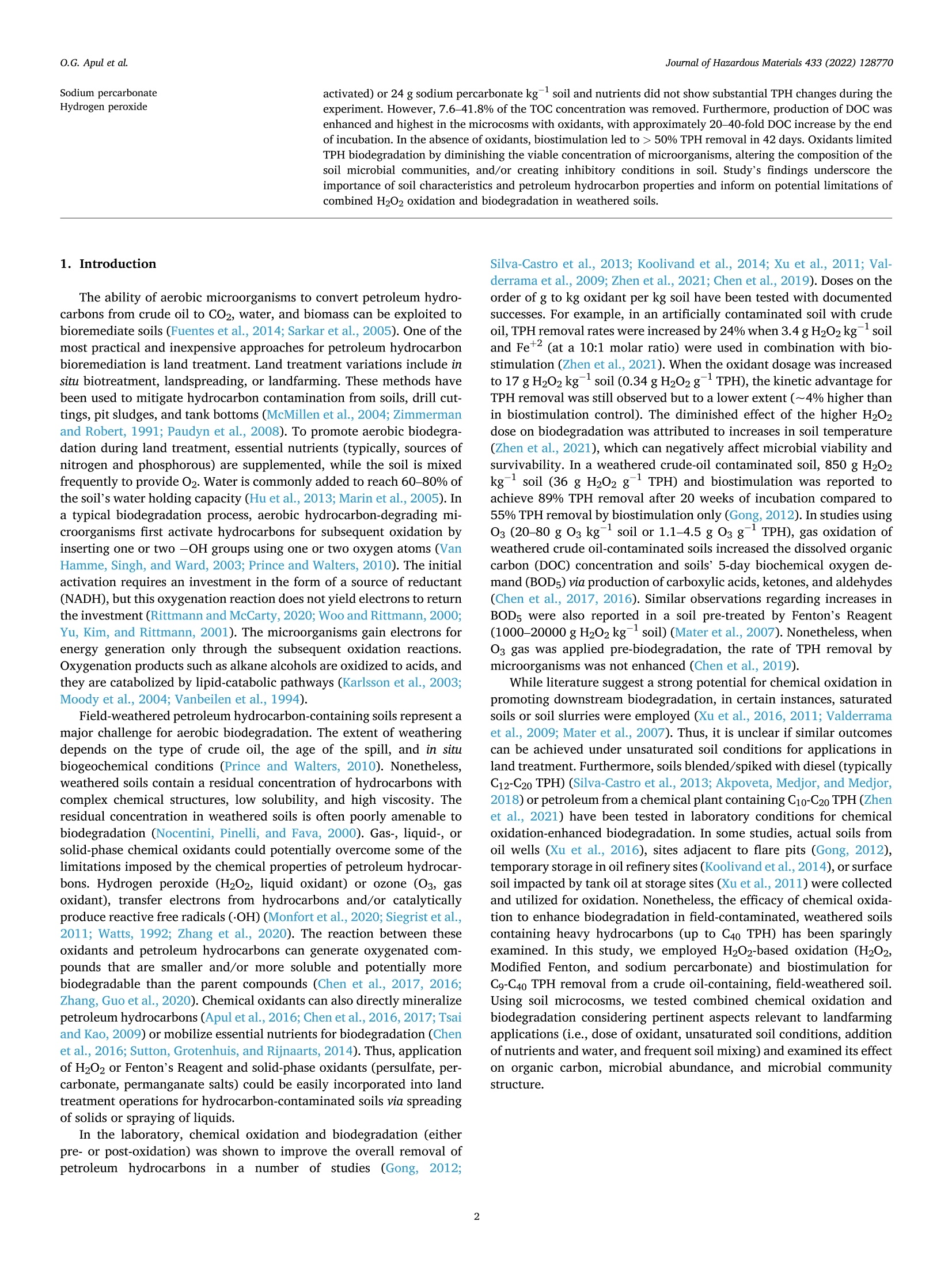
还剩7页未读,是否继续阅读?
继续免费阅读全文产品配置单
中国格哈特为您提供《受原油污染的风化土中总石油烃(TPHs)含量的检测》,该方案主要用于土壤中有机污染物检测,参考标准《HJ 1021-2019土壤和沉积物石油烃(C10-C40)的测定气相色谱法》,《受原油污染的风化土中总石油烃(TPHs)含量的检测》用到的仪器有格哈特全自动快速溶剂萃取仪Sox416、格哈特快速干燥仪STL56、格哈特强力高重现振荡器LS500/RO500、德国加液器MM、棕色避光防紫外线萃取杯、玻璃滤筒、滤纸筒。
我要纠错
相关方案


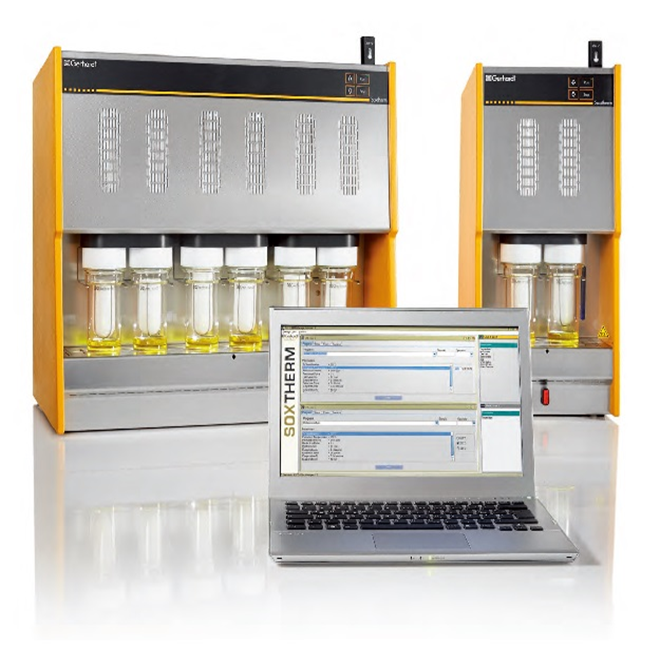

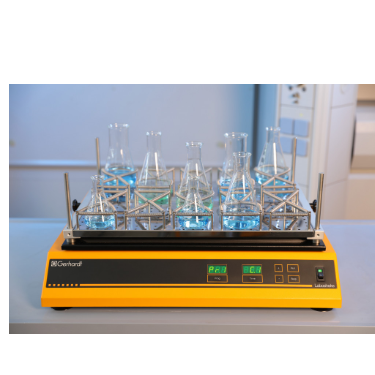
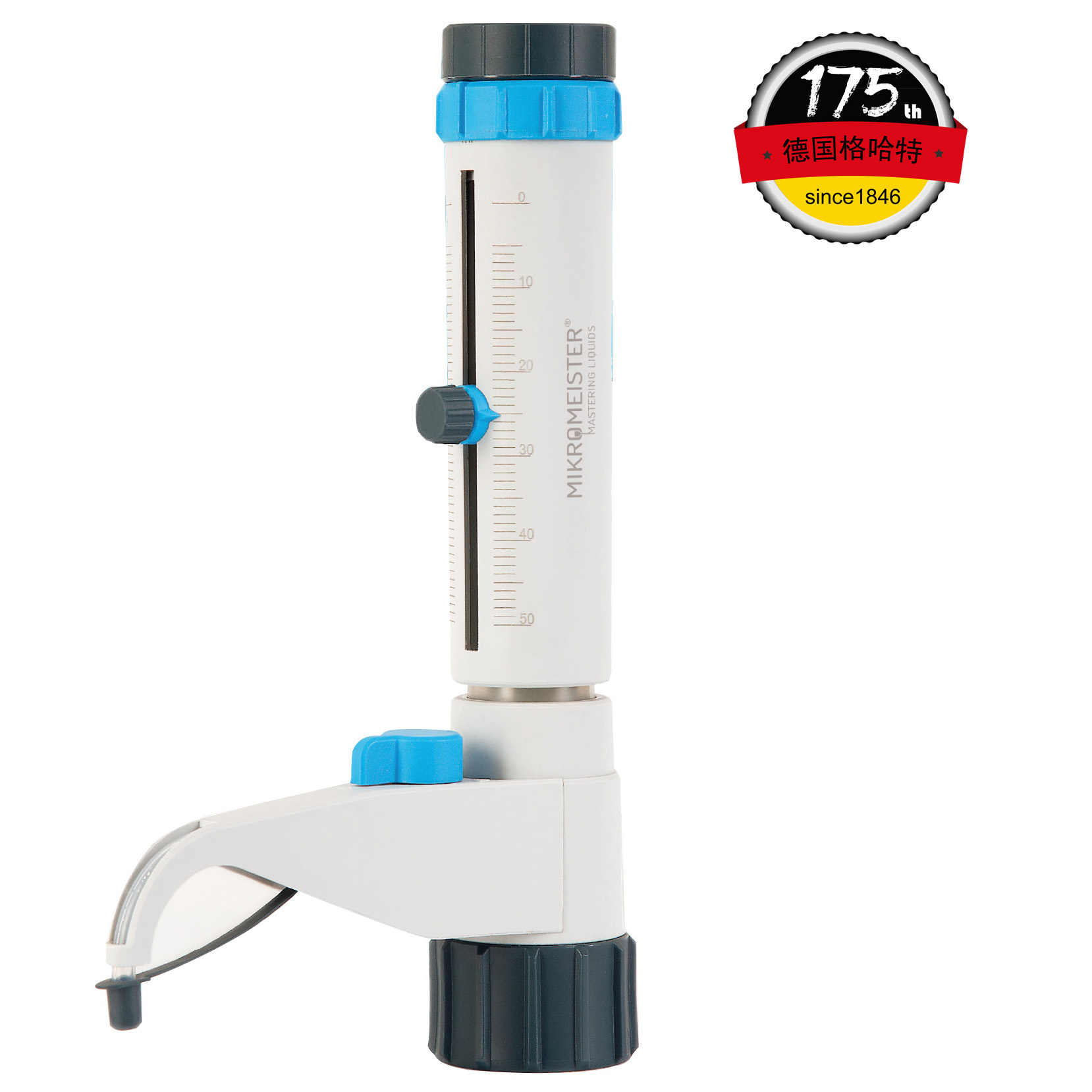


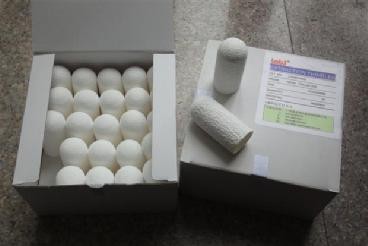
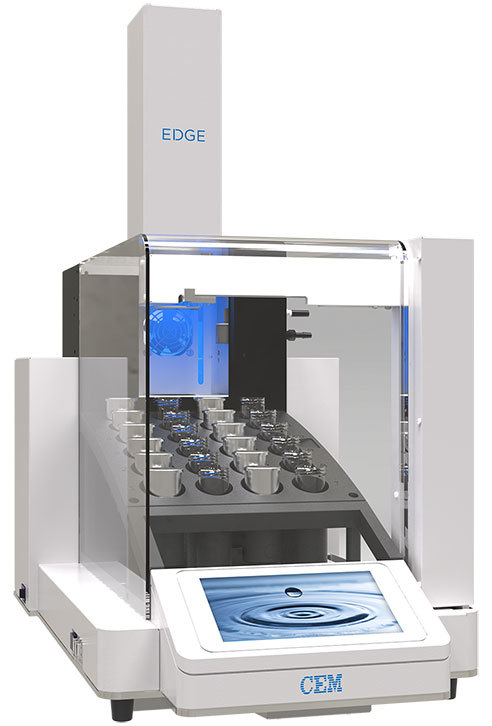
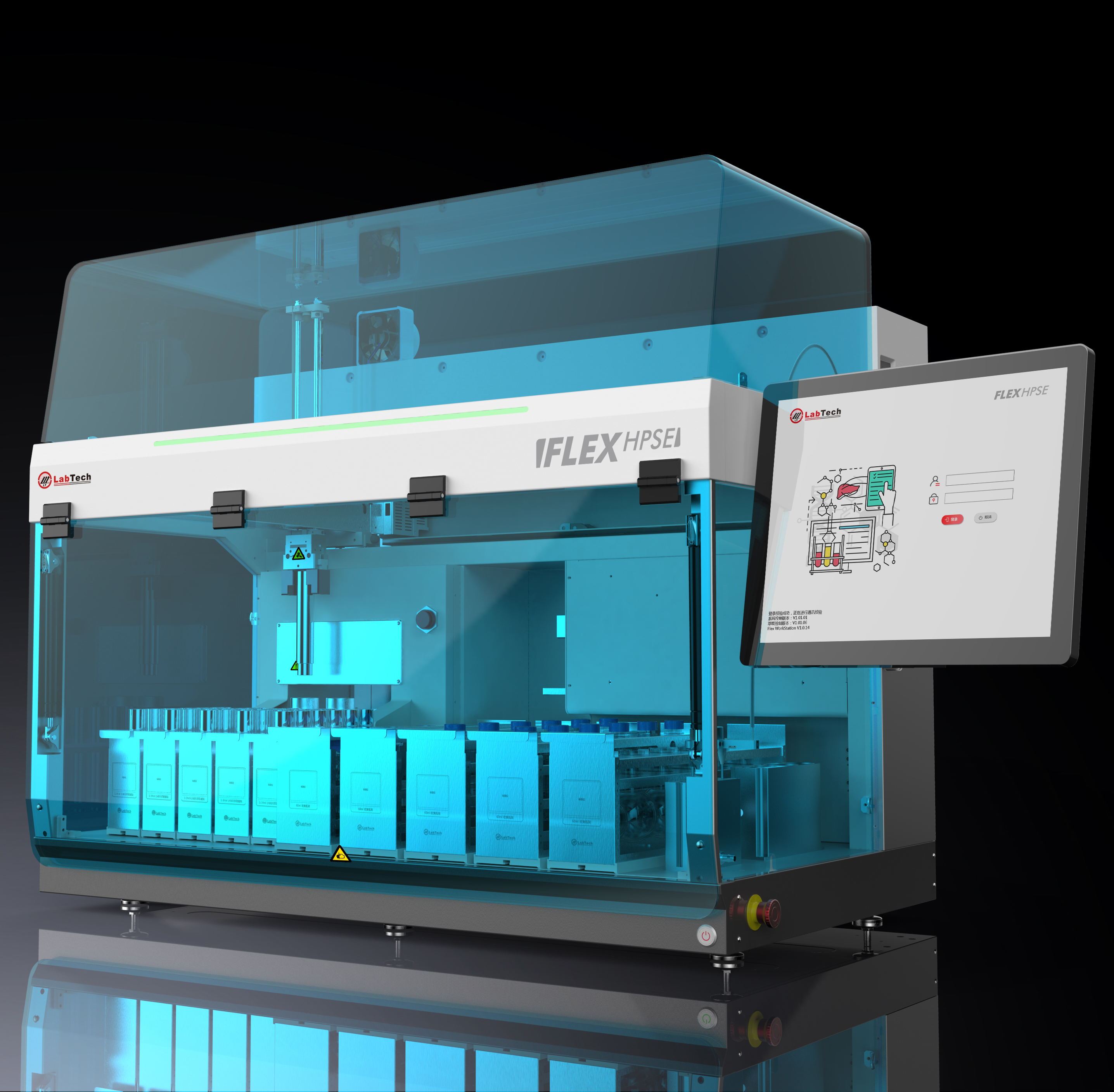
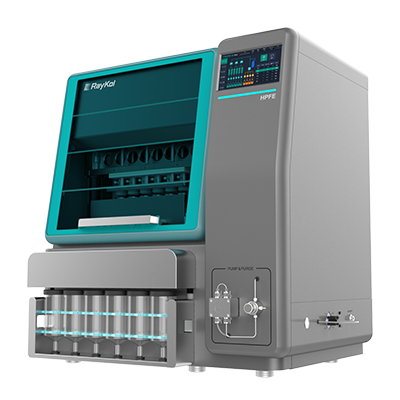


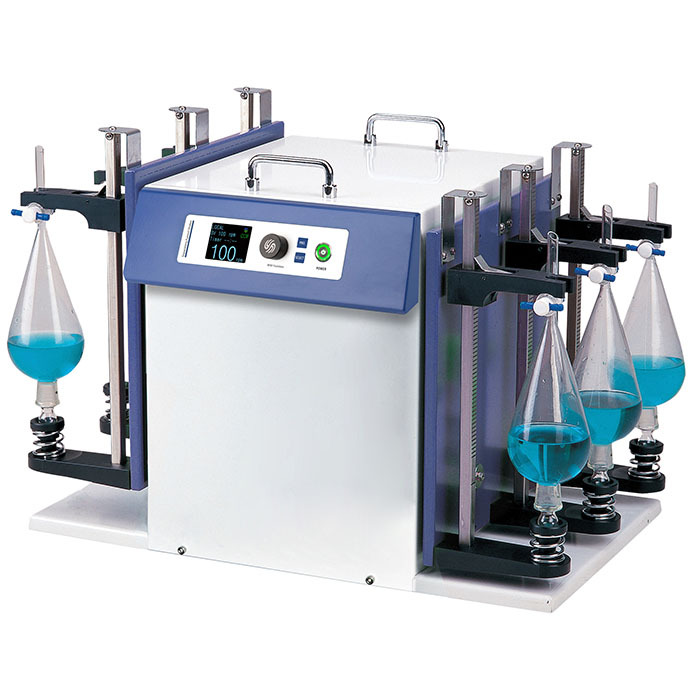
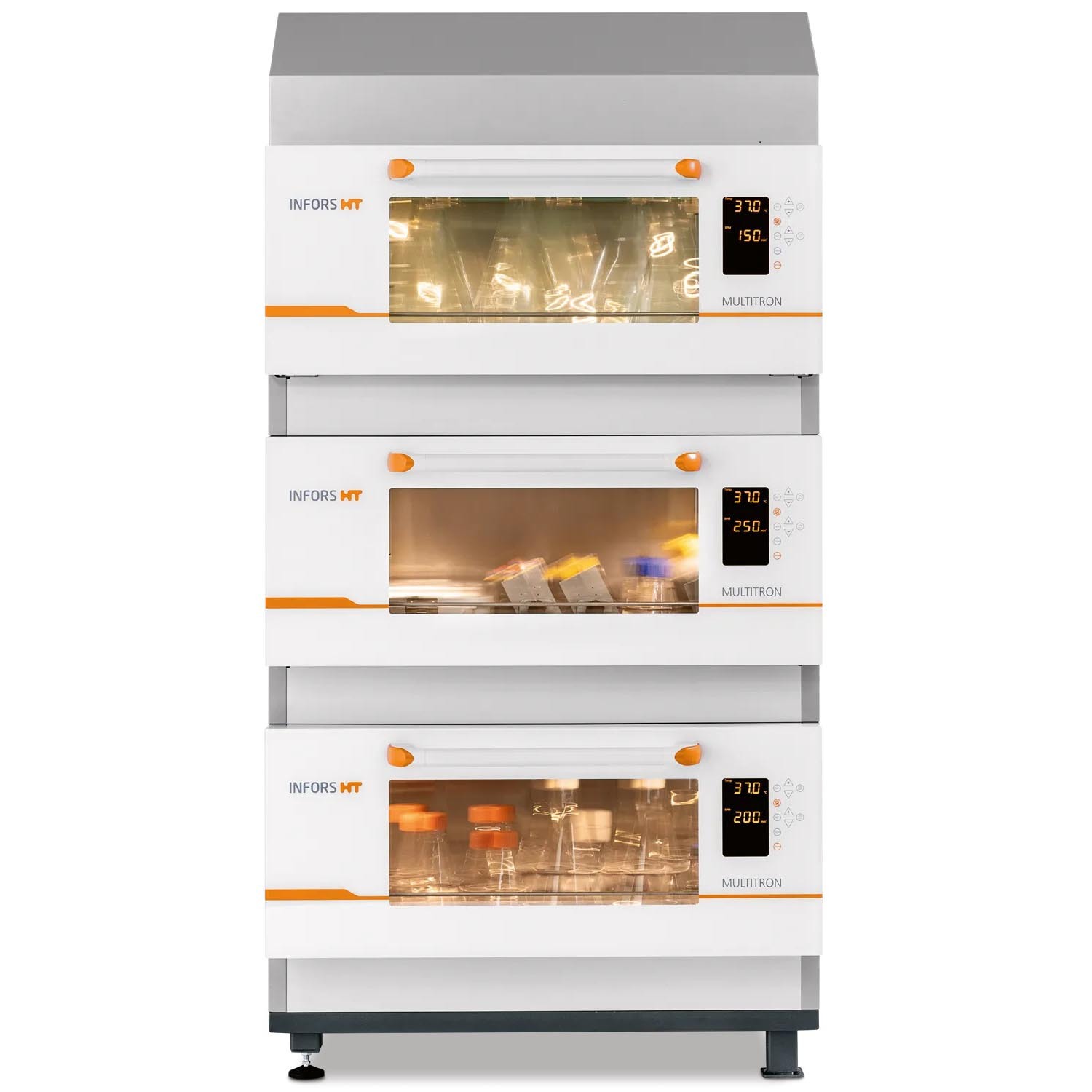
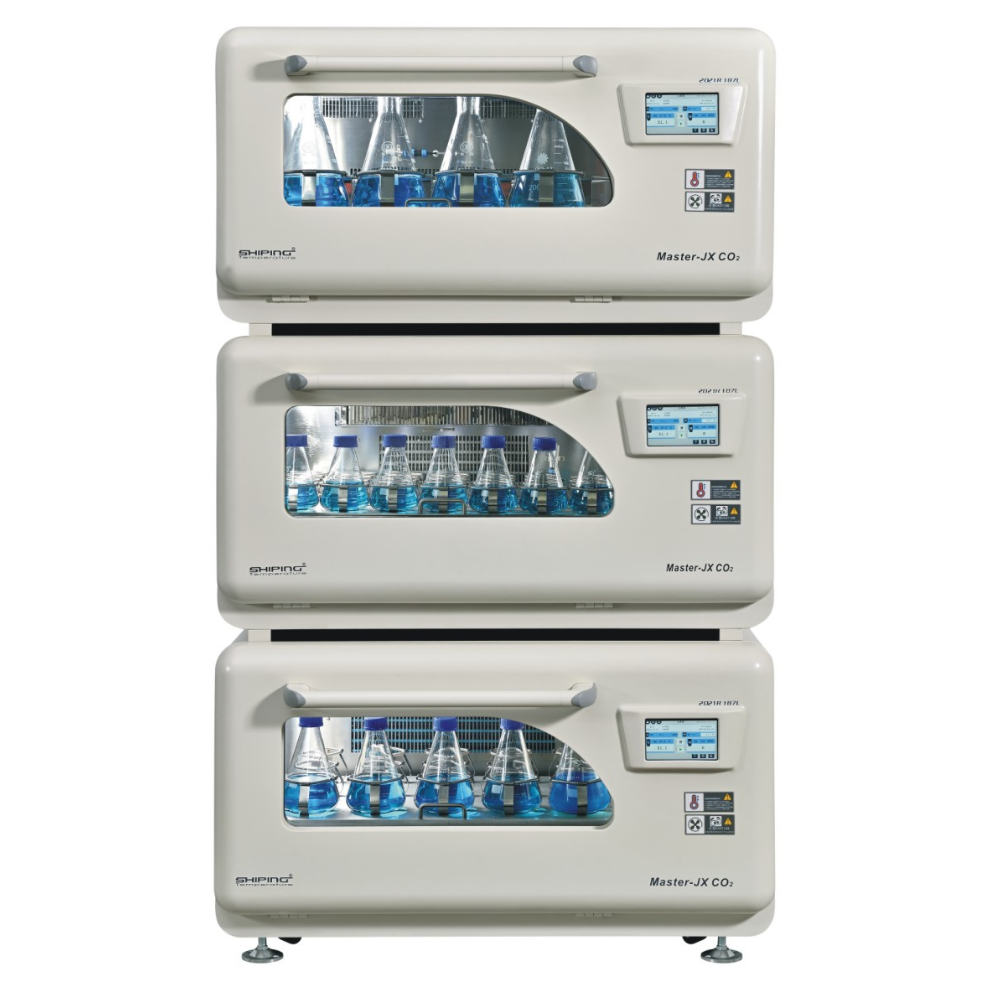



 咨询
咨询